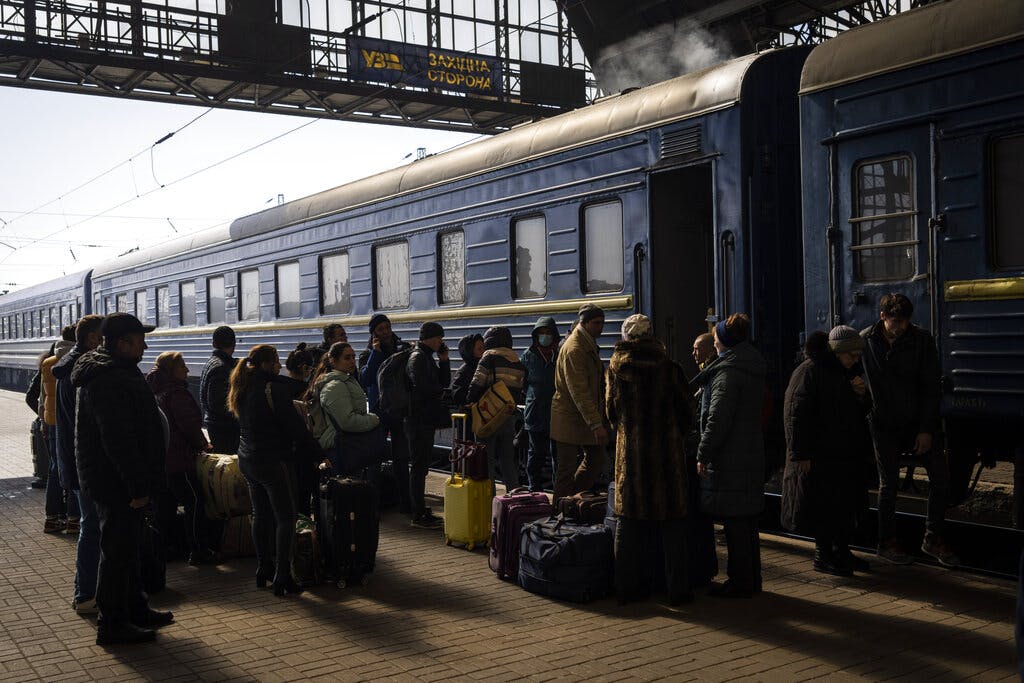The Odessa Express: Across Ukraine by Train in a Time of War
I don’t have much, just a backpack and bulletproof vest. I’m probably mistaken for one of the thousands of foreign fighters pouring into Ukraine to fight the Russians.

ODESSA, Ukraine — Few go south to Odessa from Lviv these days. Rather than heading to the country’s largest port and toward Russian forces, most choose to go the opposite direction.
Some journalists and television reporters have spent the entire war within the confines of Lviv. They wonder how the war is getting on in other places — precisely why I wanted to go to Odessa.
Odessa is Ukraine’s largest Black Sea port and, beside occupied Crimea, the most important prize on the Black Sea. Without a car, and with all flights in Ukraine grounded, the only way to get there is by overnight sleeper train.
It’s about 450 miles, or roughly the distance of a roundtrip between Washington, D.C., and New York City.
For reasons unknown, I’m unable to buy an electronic ticket from Ukrainian Railways, the country’s state-owned rail transport company. With the help of a few pointed fingers, I’m able to buy a paper ticket a half-hour before departure.
Inexplicably, that ticket I buy in person at the ticket office is cheaper than Ukraine Railways’ digital offering.
In contrast to the dense throngs of people at the Lviv train station most days, there are just a few handfuls of people clutching bags and squinting sleepily at a small and dimly lit timetable.
To beat the city’s nighttime curfew, travelers have to arrive at the station early. There aren’t many places to sit. I don’t have much, just a backpack and bulletproof vest. I’m probably mistaken for one of the thousands of foreign fighters pouring into Ukraine to fight the Russians.
After 20 minutes, I realize the sign isn’t up to speed. Afraid to miss my 22:25 train, I ask for platform directions at the information window, and a Lvivian guides me, in perfect British English, through the station straight to my carriage.
Two ticket inspectors eye my ticket suspiciously, checking the paper’s watermark in the light of the station’s incandescent lighting.
Although Ukrainian men are allowed to travel, martial law prevents them from leaving the country. Showing my passport allays their distrust, and they guide me to my compartment.
Window blinds in the corridor are drawn. Keep the light off, under no circumstances lift the blinds, and dim the light on my electronics, I’m told — a wartime travel necessity.
The four-person sleeper compartment is spartan but surprisingly modular. Two sets of blue bunks bookend a window opposite the door (blind drawn tightly shut). The bottom beds double as seats for four and fold up, disclosing the under-seat stowage.
A cubby above the door holds four sleeping rolls and pillows. Although the pillowcases are whiteish, I guess they’re not changed daily. Better than no bedding.
In Odessa, I learn it is wiser to take the top bunk whenever possible — less likely to get hit by broken glass if the windows shatter. Like Russian trains, Ukrainian rolling stock travels on five-foot, or so-called Russian gauge rails, spaced five feet apart and some of the widest gauge rails in use today.
The rail size is a holdover from the Russian empire, and though locomotives that run on the Russian gauge are broader (and the Russians say, carry greater load) than in the United States and western Europe, the ride isn’t any smoother.
Quite the opposite — jolting about from wagon six, seat 17, it is as if every boy in Ukraine placed a nickel on the rails.
The train is largely empty. Besides a small family in the next compartment, another journalist in mine, and the ticket inspectors, we are alone. Easy work for the ticket inspectors, I suppose.
My ticket says the trip will take about ten-and-a-half hours, but I don’t believe it at the speed we’re going. “Is this Odessa?” the boy in the next carriage asks his father as we pull into the first stop of our journey. “No,” is the flat reply.
The train makes its way through historic lands that have seen several conquering armies, invading forces, and marauding groups, and its history is replete with pogroms, genocide, and famine.
At one time ruled by the Polish-Lithuanian Commonwealth, the Austro-Hungarians, Ukrainian and Polish nationalists, it also alternated thrice between the Soviet and Nazi German armies.
Despite the bumpy ride, I get a few winks in and sleep shallow dreams that are periodically interrupted by blaring air raid sirens somewhere outside.
Ukrainian radar detects Russian missiles aimed at targets in western Ukraine fired from the Black Sea. The missiles pass through the airspace somewhere above us, though we’re in no grave danger for the moment.
The train pulls into the station two hours late, and we’re grateful to disembark — we couldn’t control the heating (maximum) or the windows (locked).
Andrey, a 30-year-old physical therapist, picks me up from the train station in his car. “Welcome to Odessa,” he says with a smile. “Where to?”

